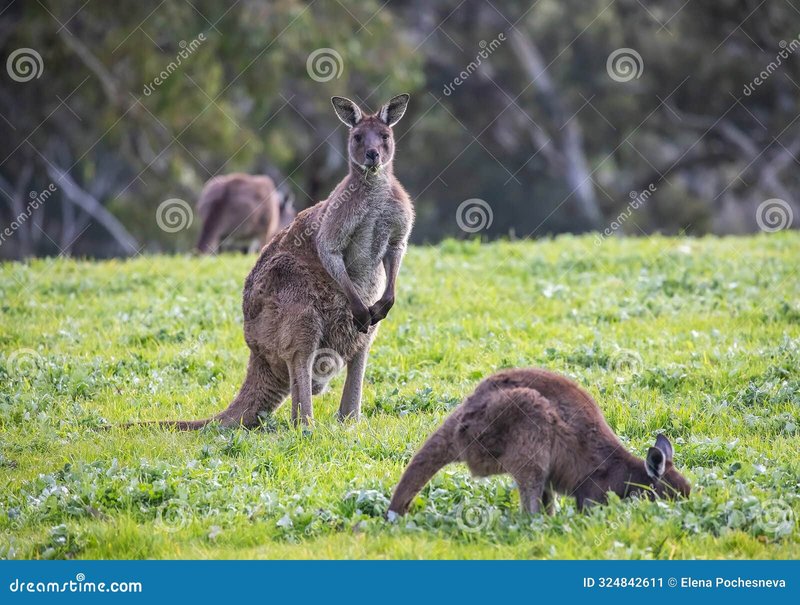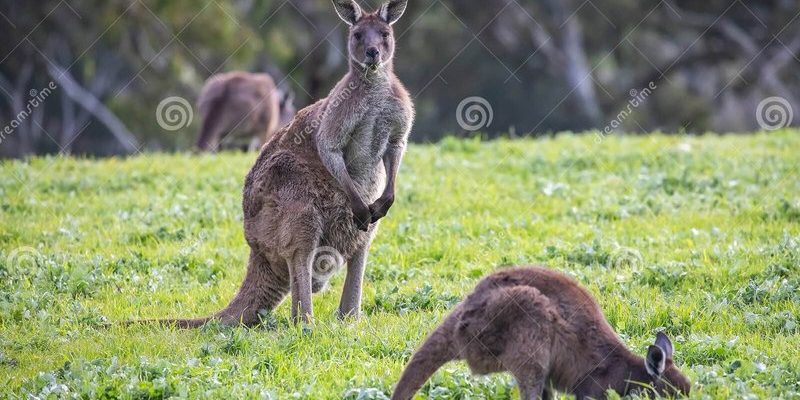
Kangaroos, which belong to the marsupial family, have a unique way of caring for their young. Unlike many animals that leave their offspring to fend for themselves fairly quickly, kangaroo mothers keep a close eye on their babies for several months, providing them with the nurturing they need to thrive in the wild. So, let’s dive into the world of kangaroo parenting and see how these amazing creatures raise their young!
The Remarkable World of Kangaroo Motherhood
Kangaroo mothers are often seen as dedicated and nurturing. After giving birth, which occurs after about 30-40 days of gestation, the tiny, underdeveloped joey, about the size of a jellybean, instinctively crawls into its mother’s pouch. This pouch acts as a protective haven, providing warmth and safety while the joey continues to grow.
Inside the pouch is where the real magic happens. It’s like a cozy nursery on-the-go! The pouch is specially designed—a kangaroo’s skin forms a pocket that keeps the joey snug and allows it to latch onto a teat and suckle milk. Here’s the thing: the milk changes composition as the joey grows, adapting to its changing needs. Isn’t that fascinating?
As the joey develops, it starts to peek out of the pouch. This is a big step! It’s like your toddler taking their first steps. The mother encourages this exploration while still ensuring they are nearby and safe from predators. Kangaroo mothers strike a balance between independence and protection, teaching their young to navigate their environment.
Growing Up: The Journey Outside the Pouch
Once the joey starts to grow, it begins to spend more time outside the pouch. This transition is gradual, akin to a teenager learning to drive. At first, the joey will stick close to its mother, staying within a few feet. It watches how she interacts with the world around them.
Kangaroos rely heavily on social structures, especially when raising young. Those first hops taken away from the pouch help the joey learn essential survival skills. It starts to graze on grass and leaves, mimicking its mother. Watching a young kangaroo practicing its hops and nibbling on grass is a sight that brings a smile to your face.
The mother’s role doesn’t stop here. She teaches her joey about socializing with other kangaroos. This is critical for the joey’s development. They learn how to communicate through body language and sounds—an important skill for survival in the wild. Plus, it’s kind of adorable to watch them hop around and interact with their peers!
Feeding and Nutrition: A Mother’s Care
A mother kangaroo’s milk is not just any milk; it’s tailor-made for her joey. When it’s very young, the milk is rich in nutrients that support rapid growth. As the joey matures, the milk evolves to help the joey build immunity and energy. It’s like customizing a smoothie just for your child’s needs!
When the joey is ready to eat solid food, it starts nibbling on grass and leaves alongside its mother. This part of the journey is crucial; the mother kangaroo introduces her young to the diverse vegetation of their habitat. She carefully selects what to eat, demonstrating how to find food that is nutritious and safe.
Kangaroos are herbivores, primarily eating grass, leaves, and shoots. This diet is not just about feeding; it’s also about teaching the joey to recognize what’s good to eat. Understanding their environment is vital for survival, and mothers do this job impeccably.
Protection and Defense: Keeping the Joey Safe
In the wild, dangers lurk around every corner. Predators, harsh weather, and food scarcity can threaten a kangaroo’s young. A mother kangaroo is fiercely protective, using her strong instincts to ensure her joey’s safety. The bond between them is powerful.
When threats appear—like a predator or a human approaching—the mother kangaroo will immediately reposition her joey, often pushing it into the pouch or shielding it with her own body. It’s a bit like how a lioness will protect her cubs. This instinctive behavior showcases the strong parental instincts in kangaroo mothers.
Moreover, if the mother senses danger, she may even use distraction tactics to lead the threat away from her young. Kangaroos are incredibly agile and can hop quickly to escape danger, all while keeping their little ones safe. This is a testament to their adaptability and intelligence in the wild.
The Role of Social Structures in Kangaroo Parenting
Kangaroos are social animals, often found in groups known as mobs. These mobs play a crucial role in raising young kangaroos. It’s a team effort! While the mother is focused on her joey, other adult kangaroos in the mob keep an eye out for potential dangers.
Young kangaroos benefit significantly from this social structure. They observe and learn from other adults in the group, which helps them adapt to their environment. This community support creates a safer environment for all the joeys, ensuring they have multiple role models to learn from.
Living in a mob also allows joeys to develop social skills. They learn to communicate and interact with peers, which is essential for their development into healthy adults. Honestly, it’s heartwarming to watch young kangaroos play and bond with one another in a safe environment under the watchful eyes of their mothers.
Weaning and Independence: The Final Steps
As the joey grows and becomes more adept at hopping around and finding food, the time for weaning approaches. Weaning is like sending your kid off to school for the first time—a bittersweet moment. It generally happens around six to twelve months, depending on the species and environment.
During this phase, the mother will start limiting how often the joey can nurse. The reason? She’s encouraging independence! It’s all about teaching the joey to rely on its own skills and instincts. The joey spends more time away from the pouch, hopping off with other juveniles to explore the world.
Once fully weaned, the young kangaroo will remain with its mother for a bit longer, learning and growing until it can fend for itself. Each step towards independence is crucial for their survival in the wild, setting the stage for a successful future.
Kangaroo parenting is a unique and fascinating process filled with nurturing, protection, and social learning. From the moment the joey enters the pouch until it is ready to explore the world independently, every aspect of kangaroo motherhood helps ensure the young survive and thrive in the wild.
As you watch kangaroos hop around—youngsters peeking shyly from their mothers’ pouches—you’re witnessing a beautiful story of growth, care, and resilience. Kangaroo mothers truly embody the spirit of nurturing while teaching life skills essential for survival. So the next time you think of kangaroos, remember the incredible journey these animals take as they raise their young in the wild!

